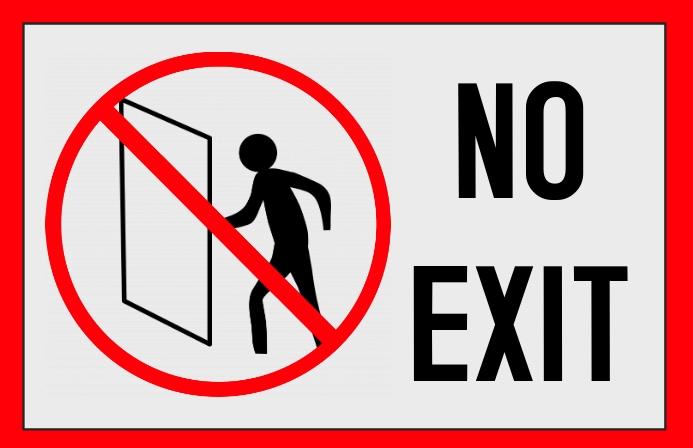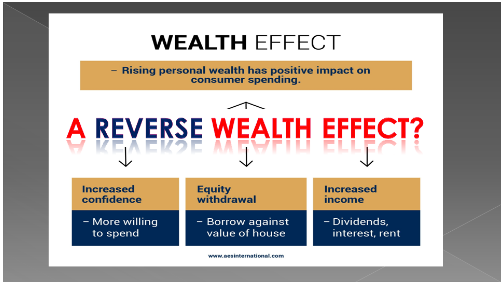Unstoppable: The Greatest Depression & The Reverse Wealth Effect
Tyler Durden
Thu, 06/11/2020 – 16:45
Authored by Charles Hugh Smith via OfTwoMinds blog,
We are entering The Greatest Depression because there is no exit.
I’ve endeavored to explain why The Greatest Depression is unstoppable in recent posts:
The Covid-19 Dominoes Fall: The World Is Insolvent March 16, 2020
Pandemic Pandemonium: The Tides of Globalization and Financialization Reverse March 31, 2020
Here’s Why the Economy Won’t Recover–and No, It’s Not Covid-19 or the Lockdown April 23, 2020
What’s Collapsing Can’t Be Saved: Our Fraudulent Economy April 22, 2020
Why Assets Will Crash May 4, 2020
Our Inevitable Collapse: We Can’t Save a Fragile Economy With Bailouts That Increase Fragility May 1, 2020
Globalization and Financialization Are Dead, and so Is Everything That Depended on Them May 15, 2020
Our Fate Is Sealed, Vaccines Won’t Matter: Four Long Cycles Align May 19, 2020
Consumer Spending Will Not Rebound–Here’s Why May 18, 2020
This Is How Systems Collapse May 30, 2020
I’ll try to summarize all this as simply as possible:
1. The global economy’s cost structure has been fatally distorted by central bank policies of inflating asset bubbles and reducing interest rates to near-zero.
2. Earnings from labor have stagnated or eroded since the era of globalization / financialization took off around 2000.
3. Everything costs too much, i.e. is no longer affordable from earnings alone, so the only way to maintain the current costly lifestyle is to borrow money and use it to pay current expenses. This is true for every sector: household, corporate and government.
4. As a result, everyone now needs every dollar of income just to pay their expenses, including interest and principal on their rising debts. There is no slack (buffers) in the system at all.
5. This can be visualized as a row of dominoes. Once the first domino falls, every domino will be toppled.
For example: a worker is laid off and can no longer afford to go to a favorite restaurant. The restaurant’s expenses are so high it can’t survive on reduced customer traffic, so it closes. The commercial landlord’s expenses are so high that he can’t afford to lower rents, but since no business can afford high rents, the space is empty and the landlord goes bust. The bank holding the mortgage then has to absorb a staggering loss because the property is no longer worth much because a building without tenants is just a money-pit of expenses and no income.
The once-valuable restaurant business is now worth zero. The once-valuable commercial property is also worth zero because the owner must continue to pay property taxes, local fees and maintenance even if there are no tenants.
The dominoes falling trigger a reverse wealth effect, a topic Gordon Long and I discuss in a new podcast A Reverse Wealth Effect? (41:52). This is important because the wealth effect–the psychological state of euphoria created when one’s assets steadily rise in value– has been a core driver of consumption since the Federal Reserve transformed the economy into a Bubble-Based Economy in the late 1990s.
When we feel wealthier because our assets are rising, we’re increasingly likely to tap that newfound wealth by borrowing money to fulfill our desires for inessential goods and services. Since the Fed has suppressed interest rates, the cost of borrowing against one’s house or buying a new car seemed remarkably affordable, especially compared to the big increases in wealth generated by rising assets.
Unfortunately, while the wealth effect can reverse, debts have to be paid regardless. Debt payments are forever while the wealth effect is fleeting.
The current mass delusion is that the Fed can bail everyone out with cost-free cash. But we have to keep in mind what the Fed can’t do:
1. It can’t reverse the unprecedented wealth inequality its policies have pushed to the point of civil breakdown.
2. It can’t make people take on the risks and heartaches of starting new businesses.
3. It can’t force employers to hire more employees.
4. It can’t make unprofitable businesses profitable.
5. It can’t force people to buy assets at prices that no longer make financial sense.
6. It can’t make insolvent businesses and local governments solvent.
7. It can’t force people who now realize their priority is to save money to spend their cash, even if the Fed forces negative interest rates so it costs money to have savings.
8. It can’t lower the unaffordable cost structure of the entire economy.
9. It can’t de-link all the financial dependencies in the financial system that make it so vulnerable to the first domino falling.
10. It can’t stop people from selling their assets.
In summary, it can’t stop the reverse wealth effect.
We are entering The Greatest Depression because there is no exit. Either the phantom wealth of asset bubbles completely vanishes, or the phantom purchasing power of fiat currency vanishes. Both paths lead to the same destination: systemic collapse.
* * *
My recent books:
Will You Be Richer or Poorer?: Profit, Power, and AI in a Traumatized World ($13)
(Kindle $6.95, print $11.95) Read the first section for free (PDF).
Pathfinding our Destiny: Preventing the Final Fall of Our Democratic Republic ($6.95 (Kindle), $12 (print), $13.08 ( audiobook): Read the first section for free (PDF).
The Adventures of the Consulting Philosopher: The Disappearance of Drake $1.29 (Kindle), $8.95 (print); read the first chapters for free (PDF)
Money and Work Unchained $6.95 (Kindle), $15 (print) Read the first section for free (PDF).
If you found value in this content, please join me in seeking solutions by becoming a $1/month patron of my work via patreon.com.

